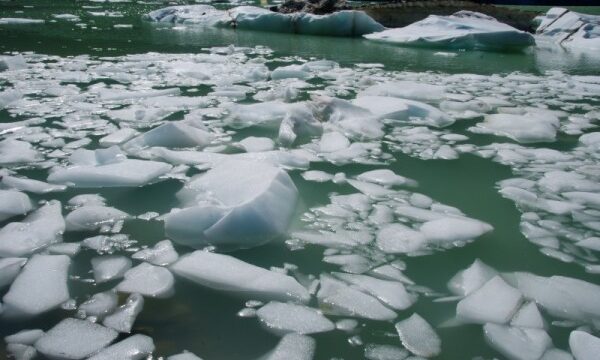Canada makes Arctic waters off limits, but questions remain
In December 2016, Canada and the United States jointly announced a ban on new offshore oil and gas drilling licences in the Arctic’s icy waters. This is a significant victory for the Arctic.
Ecojustice lawyers have worked for years with WWF-Canada to make sure that local communities and the environment are protected when decision-makers consider proposals to drill in Arctic waters. We are pleased that Canada’s announcement acknowledges both the critical importance of the Arctic waters to local communities and wildlife and the particular vulnerability of the Arctic to the impacts of an oil spill — concerns we’ve consistently raised on behalf of our client.
The ban means that the government cannot hand out any new offshore oil and gas licences in Arctic waters. And without a licence, a company cannot apply to drill for oil or gas. In essence, the ban protects both the sensitive Arctic environment and vulnerable communities by stopping risky projects before they start.
There’s no question that drilling in the Arctic poses serious risks. Not only is the environment uniquely vulnerable to an oil spill, conditions on the ground and in the waters can be hazardous and pose serious logistical challenges to companies working in the area. Some oil companies have even admitted that they just do not have the technology or processes needed to drill responsibly in the Arctic. The ban will go a long ways towards making sure that, unless and until industry develops such technology and processes, risky drilling will not go ahead.
A few questions remain
While the ban is a big step in the right direction, it is also important to recognize its limits. Canada’s ban on new licences is indefinite, but not permanent. Unlike the U.S., which proclaimed a permanent ban, Canada will review its ban every five years to see whether climate and marine science supports lifting it. The ban is also not legally binding (there is no law to enforce the ban), and has no effect on existing licences and permits, which means Arctic drilling could theoretically still happen.
In the wake of this major announcement, a few important questions remain, including:
- Will Canada legislate the ban?
In the United States, President Barack Obama took steps to make the U.S. ban legally binding. Right now, Canada’s ban is simply a policy statement (not a law) that can be changed without transparency or accountability by the government of the day. - How will the ban apply to different types of oil and gas licences?
The announcement and supporting documents explain in part what happens to an existing exploration licence, but there are other kinds of licences at play in the Arctic. Many existing Arctic licences are significant discovery licences, which do not expire and give companies an exclusive option to secure a production licence to extract oil. Will an exploration or significant discovery licence holder be able to receive a licence to produce oil, despite the ban? If so, this opens a sizeable loophole that raises both climate and marine environment protection concerns.
Although the answers to these questions may affect the degree of protection given to the Arctic, the ban is nonetheless a crucial step forward.
Ultimately, the ban gives the Arctic some breathing room — room in which Canada must act to fulfil other commitments it has made to protect the Arctic. These start with conserving Arctic biodiversity, including through the legal designation of marine protected areas. First among these must be the Lancaster , an area Ecojustice and WWF-Canada helped preserve through strategic legal action, but efforts should not stop there. The Canadian Arctic is home to dozens of ecologically- and biologically-significant marine areas spanning from the Beaufort Sea to Hudson Bay to Baffin Bay. The ban gives Canada a golden opportunity to meet its commitments and protect these areas under the law.
The bigger picture
The impacts of the ban also extend beyond the Arctic. By making its announcement with the U.S., Canada acknowledged that oil spills do not respect political boundaries. In regions like the Gulf of St. Lawrence, for example, a major oil spill could cause catastrophic harm to five different provinces and potentially harm fishing areas we share with the U.S. The Arctic announcement is a model that can and should be followed in regions like the Gulf, which has its own unique environmental and community vulnerabilities.
From coast to coast to coast, it is clear that risky oil and gas extraction and transport pose serious threats to the environment and to local communities. This ban is a good step towards making sure Canada protects and conserves the Arctic’s stunning biodiversity — and lives up to our commitments to reduce harmful greenhouse gas emissions. After all, if we are to do our part to ensure a livable earth for future generations, going forward, Canada needs to make leaving oil and gas in the ground the rule, rather than the exception.





